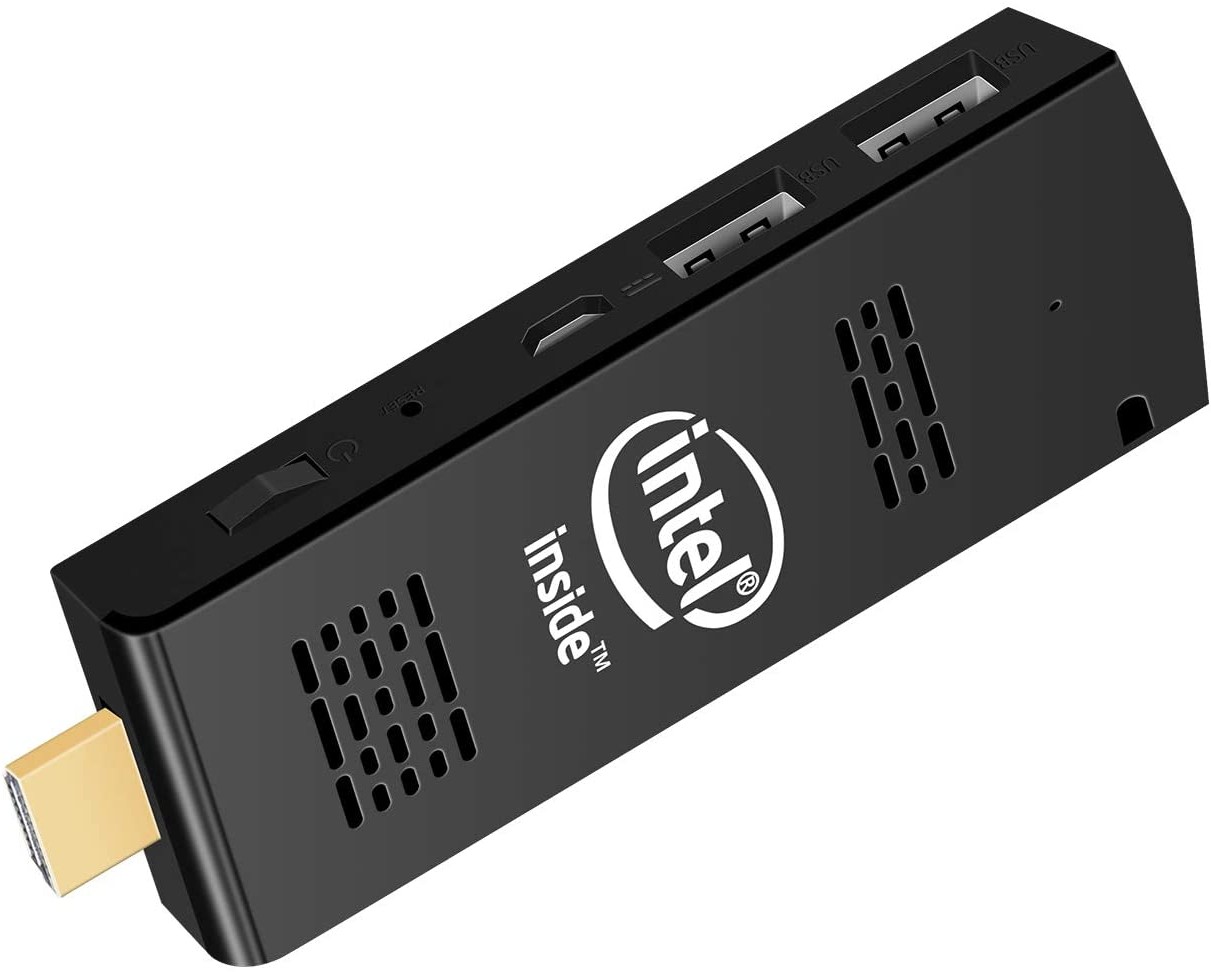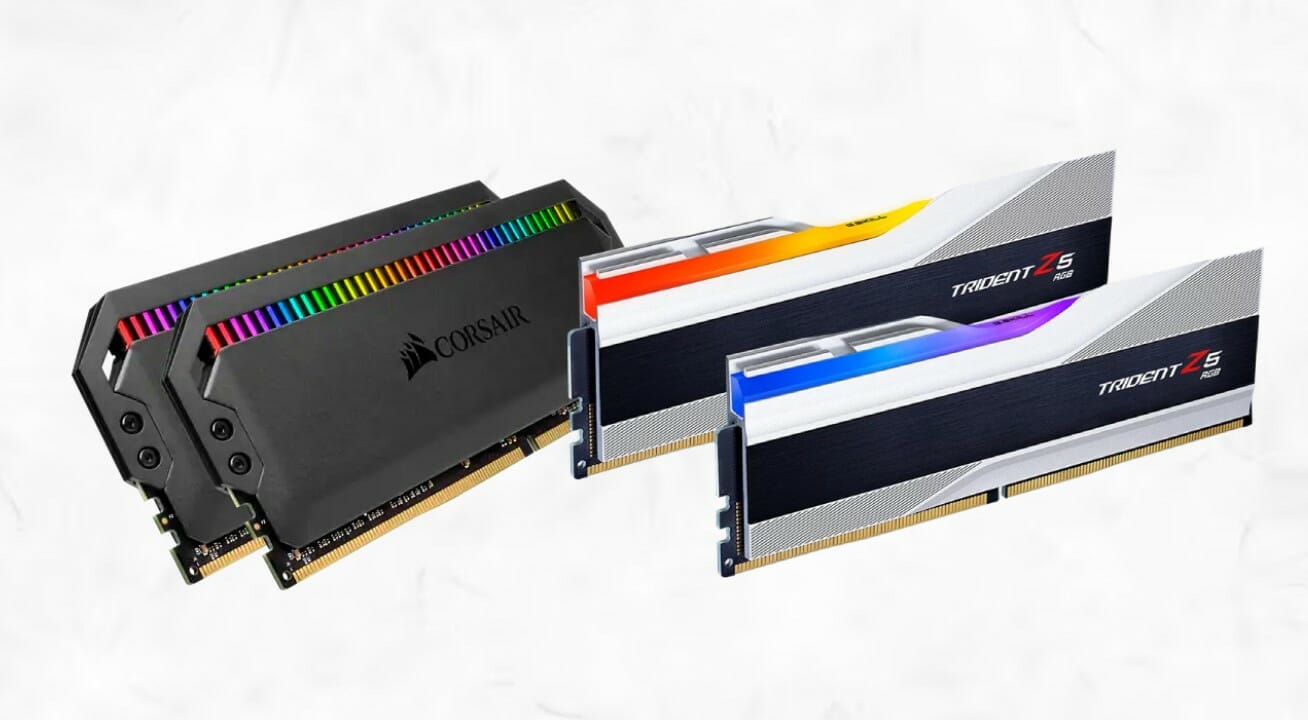Introduction
In today’s world, technology is constantly advancing, and with it, the demand for more powerful computing resources. While many computer users find that their devices function perfectly well with standard amounts of RAM, there are some who require a vast amount of memory to fulfill their needs. One such extreme example is having a whopping 128GB of RAM.
128GB of RAM might sound excessive to the average user, but for professionals in certain fields, it can open up a whole world of possibilities. This massive amount of memory can significantly enhance performance and allow for the seamless execution of resource-intensive tasks.
In this article, we will explore the various applications and benefits of having 128GB of RAM. From running multiple virtual machines to improving gaming experiences, honing graphic design skills, and even optimizing machine learning and artificial intelligence models, this level of memory can unlock a whole new level of possibilities for users in various industries.
While not everyone may have a need for such a vast amount of RAM, it’s important to understand the capabilities it brings and the potential it holds for those who require it. So, without further ado, let’s delve into the exciting world of what can be achieved with 128GB of RAM.
Run Multiple Virtual Machines Simultaneously
One of the primary advantages of having 128GB of RAM is the ability to run multiple virtual machines (VMs) simultaneously without any performance lag or constraints. Virtualization has become increasingly popular in various industries, including IT, software development, and cybersecurity, as it allows for efficient resource utilization, isolated environments, and easy scalability.
With 128GB of RAM, you can allocate a significant amount of memory to each VM, ensuring smooth and efficient operation. This opens up opportunities for tasks such as software testing, running different operating systems, or creating isolated development environments. Whether you need to test applications on multiple platforms or simulate a complex network infrastructure, having ample RAM enables you to run multiple VMs without any compromise in performance.
In addition, running multiple VMs simultaneously is particularly advantageous for training and educational purposes. Students and professionals can set up various virtual environments to practice and gain hands-on experience with different technologies, software, and systems. For example, one can have separate VMs for different programming languages or databases, allowing for seamless experimentation and learning.
Furthermore, for businesses that heavily rely on virtualization, such as hosting providers or cloud service providers, 128GB of RAM allows for better scalability and higher virtual machine density. It enables efficient utilization of server resources, improving overall operational efficiency and reducing costs.
Overall, having 128GB of RAM empowers individuals and organizations to harness the full potential of virtualization technology. Whether it’s for testing, training, or business purposes, the ability to run multiple virtual machines simultaneously opens up a world of possibilities and facilitates seamless operations.
Handle Large Datasets and Complex Analytics
In today’s data-driven world, handling large datasets and performing complex analytics is a common requirement for many industries. Whether it’s analyzing consumer behavior, conducting scientific research, or processing financial data, having 128GB of RAM can significantly enhance the efficiency and speed of these tasks.
Large datasets often require substantial memory to store and process efficiently. With 128GB of RAM, you can load and manipulate large datasets in memory, eliminating the need for frequent disk I/O operations that can slow down the process. This allows for faster data processing, analysis, and modeling, leading to quicker insights and more accurate decision-making.
Moreover, complex analytics tasks, such as machine learning algorithms, data mining, or advanced statistical analysis, often require extensive computational resources. By providing a vast amount of memory, 128GB RAM enables users to handle more complex models and calculations, leading to more accurate results and deeper analysis.
Additionally, in fields such as bioinformatics or genomics, where handling and processing large DNA sequences or genomic data is necessary, having 128GB of RAM becomes invaluable. It allows researchers and scientists to efficiently store and analyze massive datasets, speeding up discoveries and breakthroughs in these areas.
Furthermore, industries like finance, where real-time analytics and high-frequency trading are critical, can benefit immensely from the large RAM capacity. Traders and analysts can quickly process and analyze vast amounts of financial data, enabling faster decision-making and detecting patterns that could lead to profitable opportunities.
In summary, the immense memory capacity provided by 128GB of RAM allows for efficient handling of large datasets and complex analytics. Whether you’re a data scientist, researcher, financial analyst, or working in any field that deals with substantial data and requires in-depth analysis, having ample RAM improves productivity and empowers you to extract meaningful insights from your data more efficiently.
Improve Gaming and Multimedia Experience
Gaming and multimedia applications are becoming increasingly demanding in terms of system requirements. To fully immerse yourself in the world of gaming or enjoy professional-level multimedia editing, having 128GB of RAM can enhance your overall experience.
When it comes to gaming, having a high amount of RAM allows for smoother gameplay and faster loading times. With 128GB of RAM, you can maintain a larger cache of game assets in memory, reducing the time it takes for the game to access and load assets from the storage device. This results in a seamless and uninterrupted gaming experience, especially for games that require a significant amount of resources, such as open-world or graphically-intensive titles.
Additionally, with higher RAM capacity, gamers can run resource-intensive applications simultaneously. This means you can stream your gameplay to platforms like Twitch or YouTube while running voice chat applications and other supporting software without any noticeable performance impacts. This ensures a smooth multitasking experience, allowing you to interact with your audience and enhance your gaming content.
Not only does 128GB of RAM benefit gamers, but it also enhances the multimedia editing experience. Whether you’re a graphic designer, video editor, or 3D animator, working with high-resolution files, complex effects, and multiple layers can be resource-intensive. Having ample RAM allows for smoother rendering, playback, and manipulation of multimedia elements, resulting in faster workflow and increased productivity.
Moreover, with 128GB of RAM, you can efficiently work on multiple projects simultaneously without compromising performance. This is especially advantageous for professionals who often need to switch between different projects or maintain a large library of multimedia assets for their work.
In summary, having 128GB of RAM greatly enhances the gaming and multimedia experience. It provides a smoother gaming performance, faster loading times, and enables seamless multitasking. For multimedia professionals, it allows for efficient handling of high-resolution files and complex projects, resulting in improved productivity and creativity.
Accelerate Software Development
Software development is a complex and resource-intensive process that can greatly benefit from having 128GB of RAM. From compiling large codebases to running resource-intensive development environments, ample memory capacity can significantly accelerate the software development workflow.
Compiling code can be a time-consuming task, especially for large projects. With 128GB of RAM, you can store a substantial portion of the codebase in memory, reducing the compilation time by minimizing disk I/O operations. This results in faster build times, allowing developers to iterate and test their code more swiftly, improving productivity and time-to-market for software releases.
Furthermore, modern software development often involves working with resource-intensive development environments, such as IDEs (Integrated Development Environment) or virtual development environments. These environments require a significant amount of memory to run smoothly, especially when dealing with larger projects or complex frameworks. With 128GB of RAM, developers can allocate more memory to these environments, leading to improved responsiveness, faster compilation, and seamless execution of resource-intensive operations.
Additionally, having ample RAM capacity allows developers to run multiple development tools and applications simultaneously. This enables efficient multitasking, such as simultaneously running a local development server, a containerized application, and a database server for seamless testing and debugging processes.
Another advantage of having 128GB of RAM in software development is the ability to set up and manage virtual environments efficiently. Developers often need to simulate different system configurations or test software compatibility with different OS versions. With a vast amount of RAM, developers can allocate sufficient memory to each virtual environment, ensuring smooth and efficient operation, and enabling thorough testing without any constraints.
In summary, having 128GB of RAM greatly accelerates software development processes. It reduces compilation times, enables smoother operation of resource-intensive development environments, and supports efficient multitasking. Additionally, it facilitates the setup and management of virtual environments, allowing for comprehensive testing and ensuring software compatibility with various configurations. With ample memory capacity, developers can enhance productivity, improve code quality, and expedite the software development lifecycle.
Enhance Graphic Design and Video Editing
Graphic design and video editing are creative endeavors that require powerful hardware to handle high-resolution files, complex effects, and multiple layers. Having 128GB of RAM can significantly enhance the performance and efficiency of graphic design and video editing workflows.
For graphic designers, working with large design files, such as posters, banners, or high-resolution images, can be resource-intensive. With 128GB of RAM, designers can load these files into memory, allowing for faster rendering, manipulation, and editing. This results in a smoother workflow, reduces lag while working with complex designs, and enables designers to experiment with different effects and elements without any performance constraints.
Video editing, especially when working with high-definition or 4K footage, requires substantial computing power. 128GB of RAM empowers video editors to load and process large video files in memory, eliminating the need for constant disk access. This allows for seamless editing, smooth playback, and real-time previews of complex effects and transitions. It also enables faster rendering times, as the video editing software can directly access the footage and effects stored in RAM, resulting in quicker export times for the final product.
Moreover, having ample RAM allows for efficient multitasking in graphic design and video editing. Designers and editors often need to run multiple applications simultaneously, such as Adobe Photoshop, Illustrator, or Premiere Pro, alongside other supporting software. With 128GB of RAM, these applications can have access to the required memory resources, ensuring smooth operation and seamless workflow integration without any performance degradation.
Additionally, working with multiple layers and complex effects in graphic design and video editing projects necessitates a significant amount of memory. With 128GB of RAM, graphic designers and video editors can work with intricate projects without encountering memory-related issues or compromising performance. This extra memory capacity also facilitates collaboration and file sharing, as design teams can easily work on the same project and share large files without the limitations imposed by lower RAM capacities.
In summary, having 128GB of RAM greatly enhances graphic design and video editing workflows. It provides smoother rendering, faster editing, and real-time previews of high-resolution files. With ample RAM capacity, designers and editors can handle complex projects, efficiently multitask, and collaborate seamlessly. Whether you’re a graphic designer or a video editor, having a large amount of RAM empowers you to push the boundaries of creativity and achieve professional-level results.
Facilitate High-End 3D Modeling and Rendering
High-end 3D modeling and rendering requires substantial computational resources to handle complex scenes, intricate models, and realistic visual effects. With 128GB of RAM, professionals in the field can take their 3D projects to the next level by accelerating rendering times and facilitating smooth 3D modeling workflows.
3D modeling involves creating and manipulating intricate models that can be resource-intensive. With a vast amount of RAM, 128GB allows for the loading and manipulation of high-polygon models in memory, resulting in faster viewport performance and smoother editing. This means that designers and artists can work on complex projects without experiencing lag or having the software struggle to display the models accurately.
Rendering, the process of generating the final image or animation from a 3D scene, is where the benefits of 128GB of RAM truly shine. Rendering often requires significant memory to store textures, lighting information, and other data associated with the scene. With ample RAM capacity, professionals can load the necessary assets into memory, enabling faster rendering times by reducing the need for constant disk access. This leads to quicker iterations and more efficient delivery of high-quality images or animations.
Additionally, high-end 3D rendering often employs advanced techniques such as ray tracing or global illumination, which require substantial computational resources. With 128GB of RAM, professionals can allocate more memory to these resource-intensive rendering processes, resulting in more accurate and realistic renderings without sacrificing performance.
Furthermore, having ample memory capacity is crucial when working on large-scale 3D projects or scenes with numerous elements and intricate detail. It allows for the efficient storage and manipulation of multiple high-resolution texture maps, complex shaders, and volumetric effects, ensuring that the final output is of the highest quality.
In summary, 128GB of RAM greatly facilitates high-end 3D modeling and rendering. It enhances the performance of 3D modeling software, enables quicker iteration times, and provides smoother viewport performance. With ample memory capacity, professionals can load large scenes and assets into memory, accelerating rendering times and allowing for more advanced rendering techniques. Whether you’re a 3D artist, animator, or architect, having ample RAM empowers you to create stunning visualizations and bring your imagination to life in a timely and efficient manner.
Optimize Machine Learning and Artificial Intelligence
Machine Learning (ML) and Artificial Intelligence (AI) algorithms often require substantial computational resources and memory to process large datasets and train complex models. 128GB of RAM can significantly optimize and accelerate ML and AI workflows, allowing for faster training, more extensive experimentation, and improved model performance.
One key advantage of having ample RAM is the ability to load and process large datasets entirely into memory. This eliminates the need for constant disk access, resulting in faster data preprocessing and training times. With 128GB of RAM, researchers and practitioners in the field of ML and AI can effectively handle and manipulate massive datasets, enabling more accurate model training and analysis.
Additionally, when training complex ML or AI models, memory capacity plays a critical role. Deep Learning models, which consist of multiple layers and millions of parameters, often require a significant amount of memory to hold intermediate calculations during the training process. With 128GB of RAM, practitioners can allocate more memory for storing intermediate results and gradients, leading to faster convergence and improved model performance.
Furthermore, having ample RAM enables practitioners to experiment with more significant variations in models and hyperparameters. Parameter tuning and model optimization often require running multiple experiments with different configurations, which can be computationally expensive. With 128GB of RAM, researchers can simultaneously train and evaluate multiple models, boosting productivity and enabling faster iterations.
Another benefit of having a large amount of RAM in ML and AI workflows is the capacity to work with complex models and architectures. With ample memory resources, practitioners can seamlessly work with large-scale neural networks with multiple hidden layers, intricate architectures, and massive numbers of parameters, enabling the training of more complex and sophisticated models.
In summary, 128GB of RAM significantly optimizes ML and AI workflows by enabling faster data processing, more extensive experimentation, and improved model performance. It allows for efficient handling of large datasets, faster training times, and the ability to experiment with complex models and hyperparameters. With ample memory capacity, practitioners can push the boundaries of ML and AI, leading to more accurate predictions, sophisticated models, and groundbreaking advancements in the field.
Boost Server Performance and Optimization
In a server environment, where uptime, performance, and scalability are crucial, having 128GB of RAM can significantly boost performance and optimize server operations. A higher RAM capacity enables servers to handle larger workloads, accommodate more users, and ensure smooth and efficient operation.
With 128GB of RAM, servers can cache frequently accessed data and host more applications in memory. This reduces the need for disk I/O operations, which can be a significant performance bottleneck. By keeping commonly used data in memory, servers can quickly retrieve and serve that data to users, resulting in improved response times and a more responsive user experience.
Furthermore, high RAM capacity is particularly advantageous for databases and data-intensive applications. Databases often rely on RAM for caching data and indices, speeding up query performance. With 128GB of RAM, servers can allocate more memory for caching, resulting in faster database operations, quicker query execution, and improved overall database performance.
In addition, servers hosting virtualized environments, such as virtual private servers (VPS) or cloud hosting platforms, can benefit from 128GB of RAM. The additional memory enables higher virtual machine density and allows for the more efficient allocation of resources to individual VMs. This translates into improved performance, reduced latency, and better overall resource utilization, providing a better user experience for customers leveraging these virtualized environments.
Moreover, when it comes to web servers, having ample RAM allows for better handling of traffic spikes. With the ability to cache frequently accessed web pages and server-side data, servers can respond quickly to a surge in user requests without becoming overloaded. This ensures consistent performance and prevents website slowdowns or crashes during peak traffic periods.
Additionally, server applications that require substantial memory to run smoothly, such as content management systems (CMS), e-commerce platforms, or big data processing frameworks, can greatly benefit from 128GB of RAM. The increased memory capacity allows these applications to handle larger datasets, execute resource-intensive operations efficiently, and improve overall performance.
In summary, 128GB of RAM provides a significant boost to server performance and optimization. It enables efficient data caching, faster database operations, improved virtualization density, and better handling of traffic spikes. With ample memory capacity, servers can handle larger workloads, improve response times, and ensure a smooth and responsive user experience. Whether it’s for hosting web applications, databases, or virtualized environments, having 128GB of RAM empowers organizations to scale their server operations and meet the demands of a growing user base.
Enable Efficient Database Management
Efficient database management is crucial for businesses that rely on storing and retrieving large amounts of data. With 128GB of RAM, organizations can significantly optimize their database operations, improve performance, and ensure seamless data management.
One key advantage of having ample RAM for database management is the ability to cache frequently accessed data and database indexes. By keeping commonly used data in memory, databases can respond to queries more quickly, reducing the need for disk I/O operations. This results in improved query performance and faster data retrieval, enhancing overall database efficiency.
Furthermore, high RAM capacity enables organizations to allocate more memory for running complex database operations and analytical queries. With 128GB of RAM, organizations can handle more extensive and resource-intensive queries, allowing for faster data analysis and real-time insights. This is particularly beneficial for business intelligence applications, data analytics, and decision-making processes that rely on large-scale data processing.
In addition, having ample memory capacity facilitates the handling of larger datasets. With 128GB of RAM, databases can efficiently store and manipulate significant amounts of data in memory, reducing the need for frequent disk access. This improves overall performance, reduces latency, and ensures smooth data processing, even with high transaction volumes or concurrent user access.
Moreover, high RAM capacity is advantageous for organizations running multiple databases or virtualized environments. With 128GB of RAM, organizations can allocate sufficient memory resources to each database instance, preventing resource contention and ensuring optimal performance. Additionally, having ample memory allows for improved consolidation efforts, where multiple databases can be consolidated into a single server, reducing infrastructure costs and simplifying database management.
Additionally, having ample memory capacity can enhance data replication and backup processes. With 128GB of RAM, organizations can allocate a significant portion of memory to buffer and replicate data, reducing the time needed for data synchronization and improving data redundancy and disaster recovery capabilities.
In summary, 128GB of RAM enables efficient database management by facilitating data caching, improving query performance, handling large datasets, and supporting multiple database instances. It ensures smooth and responsive database operations, enables faster data analysis, and enhances overall database efficiency. With ample memory capacity, organizations can effectively manage their databases, handle growing data volumes, and ensure optimal performance for critical business applications and decision-making processes.
Support Advanced Scientific Research and Simulations
Advanced scientific research and simulations often involve complex calculations, massive amounts of data, and heavy computational workloads. Having 128GB of RAM can provide the necessary resources to support these endeavors, enabling researchers to perform intricate simulations, conduct data-intensive analysis, and push the boundaries of scientific knowledge.
Computational simulations, such as molecular dynamics simulations, weather simulations, or astrophysical simulations, require substantial memory to store and manipulate large datasets. With 128GB of RAM, researchers can load these datasets entirely into memory, allowing for faster data access and processing. This facilitates more accurate simulations and expedites the discovery of new insights within the scientific domain.
In addition, many scientific research tasks involve the analysis of vast amounts of data, such as genomics, particle physics, or climate studies. Researchers can leverage the high memory capacity to load and process these data sets, allowing for faster data analysis and empowering them to uncover hidden patterns and correlations more efficiently.
Moreover, having ample RAM capacity enables researchers to run multiple simulations or data analysis tasks simultaneously. This is particularly useful when exploring different parameters or scenarios, enabling researchers to compare results and gain a more comprehensive understanding of their experiments. With 128GB of RAM, researchers can allocate sufficient memory to each simulation or analysis task, ensuring efficient execution and data processing.
Furthermore, in fields such as bioinformatics or drug discovery, where large-scale data analysis is crucial, having 128GB of RAM becomes essential. It allows scientists to handle and analyze vast genomic datasets, perform intricate protein modeling and docking studies, or simulate complex molecular interactions, all without compromising performance and efficiency.
Additionally, with the advancement of artificial intelligence and machine learning in scientific research, having ample RAM capacity is vital. Researchers can utilize 128GB of RAM to train complex AI models, analyze massive amounts of scientific data, and develop AI-powered algorithms for various scientific domains, including drug discovery, image analysis, and predictive modeling.
In summary, 128GB of RAM supports advanced scientific research and simulations by providing the necessary resources to handle large datasets, run complex simulations, and perform data-intensive analysis. It enables faster data access and processing, allows for simultaneous execution of multiple tasks, and opens up new possibilities for AI and machine learning in scientific research. With ample memory capacity, researchers can push the boundaries of knowledge, drive scientific breakthroughs, and make significant contributions to their respective fields of study.
Conclusion
The advantages of having 128GB of RAM are evident across various industries and applications. From running multiple virtual machines to handling large datasets, enhancing gaming and multimedia experiences, accelerating software development, facilitating graphic design and video editing, enabling efficient database management, optimizing machine learning and artificial intelligence, boosting server performance, and supporting advanced scientific research and simulations, the benefits of ample RAM capacity are far-reaching.
128GB of RAM empowers professionals and businesses to push the boundaries of what is possible in their respective fields. It enables the seamless execution of resource-intensive tasks, provides faster data access and processing, enhances performance, and expedites workflows. With the immense memory capacity offered by 128GB of RAM, users can handle larger workloads, process complex algorithms, analyze massive datasets, and create intricate designs without any performance constraints.
Whether it’s in the realm of virtualization, data analytics, creative design, or scientific research, having 128GB of RAM allows professionals to work more efficiently, achieve higher productivity levels, and deliver exceptional results. It opens up new possibilities, enhances user experiences, and promotes innovation.
As technology continues to advance, the demand for powerful computing resources will only increase. Having a high amount of RAM, such as 128GB, will provide a competitive edge, allowing individuals and organizations to stay ahead in today’s rapidly evolving digital landscape.
While not everyone may require 128GB of RAM for their daily computing needs, understanding the potential and capabilities it offers is essential. Whether you’re a professional in a specific field or a tech enthusiast seeking the ultimate computing experience, having ample RAM ensures that your system can handle the most demanding tasks with ease.
In conclusion, 128GB of RAM brings a new level of performance, efficiency, and possibilities to your computing experience, empowering you to achieve more, create better, and unlock the full potential of your digital endeavors.

























